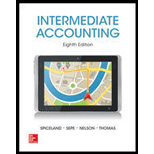
a. Current assets:
Current asset is a cash or asset which can be easily converted into cash within one year. Some of the examples of current assets are cash, short-term investment, and accounts receivable.
b. Investments and funds:
The process of sacrificing today’s money for a future return is known as investment. Funds are the process of saving money for a particular purpose. Examples of investments and funds are bond, Long-term receivables.
c. Property, plant and equipment:
The assets that are physical in nature, and add value to the business in the future are referred to as tangible assets. Some of the examples of tangible assets are land, building and plant.
d. Intangible assets:
The assets that are not physical in nature, and add value to the business in the future are referred to as intangible assets. Some of the examples of intangible assets are
e. Other assets:
The assets which are not included in the current assets and current liabilities are referred to as other assets. Some of the examples of other assets are prepaid insurance, outstanding rent
f. Current liabilities:
Liability is an organization’s legal debt that occurs during course of thebusiness. Current liability is the debt, which the company is liable to pay the outsiders within a year. Some of the examples of current liabilities are accounts payable, salaries payable, Interest payable.
g. Long-term liabilities:
The liabilities which have a longer maturity period (more than one year) are referred to as long-term liabilities. Some of the examples of long-term liabilities are debenture and long-term loan.
h. Paid-in capital:
Paid-in capital is a part of
The main source of paid-in capital is capital contributed by investors or stockholders in the company. Some of the examples of paid-in capital preference stock and
i.
These are the amount of earnings andare not distributed as dividends to the shareholders.
To Classify: The following items in the appropriate category.
Want to see the full answer?
Check out a sample textbook solution
Chapter 3 Solutions
Intermediate Accounting w/ Annual Report; Connect Access Card
- I need help with this financial accounting question using standard accounting techniques.arrow_forwardI am searching for the correct answer to this financial accounting problem with proper accounting rules.arrow_forwardCan you help me solve this financial accounting question using valid financial accounting techniques?arrow_forward
- Sisu, Oliver and Jones are partners. They share profits and losses in the ratios 2/5,2/5 and 1/5 respectively. For the year ended 31 December 19x6 their capital accounts remained fixed at the following amounts Sisu R6000 Oliver R4000 Jones R2000 They have agreed to give each other 10 per cent per annum on their capital accounts. In addition to the above partnership salaries of R3000 for Oliver and R1000 for Jones are to be charged. The net profit of the partnership before taking any of the above into account was R25200. You are required to draw up the appropriation statement of the partnership for the year ended 31 December 19x6arrow_forwardPlease explain the solution to this general accounting problem using the correct accounting principles.arrow_forwardPlease explain the solution to this financial accounting problem using the correct financial principles.arrow_forward

 AccountingAccountingISBN:9781337272094Author:WARREN, Carl S., Reeve, James M., Duchac, Jonathan E.Publisher:Cengage Learning,
AccountingAccountingISBN:9781337272094Author:WARREN, Carl S., Reeve, James M., Duchac, Jonathan E.Publisher:Cengage Learning, Accounting Information SystemsAccountingISBN:9781337619202Author:Hall, James A.Publisher:Cengage Learning,
Accounting Information SystemsAccountingISBN:9781337619202Author:Hall, James A.Publisher:Cengage Learning, Horngren's Cost Accounting: A Managerial Emphasis...AccountingISBN:9780134475585Author:Srikant M. Datar, Madhav V. RajanPublisher:PEARSON
Horngren's Cost Accounting: A Managerial Emphasis...AccountingISBN:9780134475585Author:Srikant M. Datar, Madhav V. RajanPublisher:PEARSON Intermediate AccountingAccountingISBN:9781259722660Author:J. David Spiceland, Mark W. Nelson, Wayne M ThomasPublisher:McGraw-Hill Education
Intermediate AccountingAccountingISBN:9781259722660Author:J. David Spiceland, Mark W. Nelson, Wayne M ThomasPublisher:McGraw-Hill Education Financial and Managerial AccountingAccountingISBN:9781259726705Author:John J Wild, Ken W. Shaw, Barbara Chiappetta Fundamental Accounting PrinciplesPublisher:McGraw-Hill Education
Financial and Managerial AccountingAccountingISBN:9781259726705Author:John J Wild, Ken W. Shaw, Barbara Chiappetta Fundamental Accounting PrinciplesPublisher:McGraw-Hill Education





